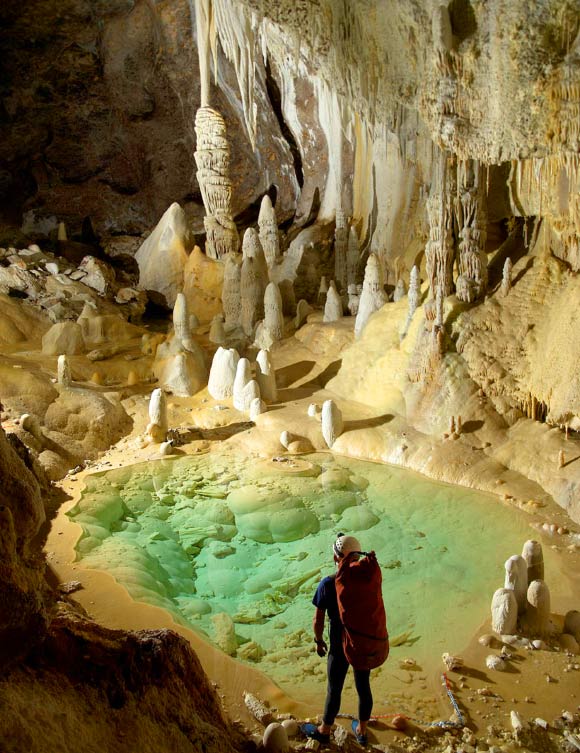According to a team of researchers led by Gerald Wright, a professor of biochemistry and biomedical sciences at McMaster University, Lechuguilla Cave — an underground ecosystem that has been isolated from the surface for over 4 million years — is home to a remarkable prevalence of antibiotic-resistant bacteria.
Lechuguilla Cave, one of the longest caves in the world and deepest in the United States, is located in Carlsbad Caverns National Park in New Mexico.
Due to the fragile and highly technical nature of the cave, it has been closed to all except a few scientists and cave experts since its original discovery in 1986.
This restricted access makes it an ideal environment in which to study how microorganisms have evolved without the influence of human activity.
In a study published in the journal Nature Communications, Prof. Wright and co-authors examined a bacterium, Paenibacillus sp. LC231, found in the cave.
The results show the bacterium is resistant to 26 of 40 antibiotics tested.
“We generated a quantitative antibiogram for Paenibacillus sp. LC231 for 40 different antibiotics that target diverse cellular processes and compared it with the susceptibility of a surface strain of Paenibacillus lautus ATCC 43898, the pathogen Staphylococcus aureus RN4220 and the environmental bacterium Kocuria rhizophila,” the authors said.
“We focused our investigation on Paenibacillus sp. LC231 and determined that in addition to resistance to 14 classes of antibiotic, it inactivates 7 distinct classes.”
Paenibacillus sp. LC231 has been isolated from the outside world for more than 4 million years within the cave, but it uses identical methods of defense as similar species found in soils.
This suggests that the evolutionary pressure to conserve these resistance genes has existed for millions of years — not just since antibiotics were first used to treat disease.
“Lechuguilla Cave is isolated from the surface and direct interaction of Paenibacillus sp. LC231 with pathogens is unlikely,” the researchers explained.
“However, our results demonstrate that surface Paenibacillus also have the same collection of resistance genes as LC231.”
Among the different ways that the bacteria could be resistant to antibiotics, Prof. Wright’s team identified five novel pathways that were of potential clinical concern.
Finding these new pathways is particularly valuable, as it gives researchers time to develop new drugs to combat this type of resistance, potentially decades before it will become a problem for doctors and their patients.
“The diversity of antibiotic resistance and its prevalence in microbes across the globe should be humbling to everyone who uses these lifesaving drugs,” Prof. Wright said.
“It reflects the fact that we must understand that antibiotic use and resistance go hand in hand.”
“Exploring these challenging and remote environments offers a unique opportunity to sample the genetic diversity of microbes untouched by human activity,” added co-author Prof. Hazel Barton, from the University of Akron.
_____
A.C. Pawlowski et al. 2016. A diverse intrinsic antibiotic resistome from a cave bacterium. Nat. Commun. 7: 13803; doi: 10.1038/ncomms13803








